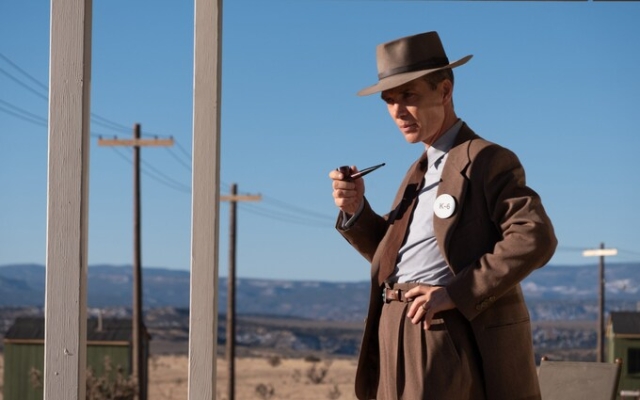 Cillian Murphy as J. Robert Oppenheimer. Credit & Copyright: Universal
Cillian Murphy as J. Robert Oppenheimer. Credit & Copyright: Universal
You have no doubt already seen Christopher Nolan's masterpiece about the life of J. Robert Oppenheimer, the American theoretical physicist who developed the first atomic bomb as part of the Manhattan Project. Not only was it a box office hit, but it received rave reviews from critics, who praised Nolan for his combination of mental acumen and quickened pulse.
However, it is inevitable that Hollywood and the accuracy of the facts always become difficult companions. Although Nolan is an unusually demanding and conscientious director, and Oppenheimer is based on the biography of the American Prometheus, the Pulitzer Prize-winning physicist Kai Byrd and Martin J. Sherwin have fictional moments and scenes. But which ones show cinematic license, and which ones are based—unbelievably—factual?
Did Oppenheimer really poison his mentor's apple?
There is a startling scene in the beginning in which a young Oppenheimer, then a student at Cambridge, injects cyanide into Professor Patrick Blackett's apple in a fit of rage after Blackett makes him skip part of a lecture by Niels Bohr (who later became sort of a tutor to the physicist). It's a startling scene, and bears a casual resemblance to the death of another brilliant, troubled man, Alan Turing, who died after supposedly eating a cyanide-laced apple. But, according to Oppenheimer's grandson Charles, this is pure fiction.
«I don't like that poison apple reference,» he told Time. If you read American Prometheus carefully enough, the authors will say, «We don't really know if this happened… There is no record of him trying to kill anyone.» This is indeed a serious accusation and a historical revision. There is no enemy or friend of Robert Oppenheimer who heard this in his lifetime and believed it to be true.»
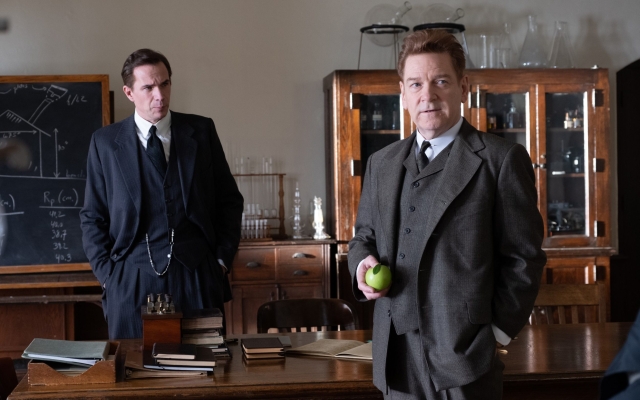 James D' Arcee and Kenneth Branagh in Oppenheimer. Photo: Universal
James D' Arcee and Kenneth Branagh in Oppenheimer. Photo: Universal
However, both American Prometheus and Raymond J. Monk's 2012 biography of Oppenheimer suggest that the incident took place. As Monk writes, «In an attempt to kill his mentor, or at least make him seriously ill, Oppenheimer left an apple poisoned with poisonous chemicals on Blackett's desk.» The author notes that it became part of the myth about Oppenheimer: “The incident was hushed up at that time, and none of his friends knew about it until Oppenheimer himself told them about it, usually in some more or less introduction to version misleading. However, that his feelings for Blackett mingled passionate admiration with fierce jealousy was evident to those who knew him well.
Monk suggests that his actions were somehow discovered, but he was allowed to continue his studies in exchange for agreeing to be examined by a psychiatrist in Harley Street. If he had been expelled from Cambridge or imprisoned, his seismic career would have been curtailed without ever starting.
However, according to Monk, one moment in the film is pure cinematic fiction. «I think we can be sure that Niels Bohr didn't pick up the apple and that Oppenheimer didn't knock it out of his hand,» he says. Even Nolan is not immune to the temptation to fake for their own sake.
Was Jean Tetlock murdered?
One of Oppenheimer's most intriguing characters is Florence Pugh's Jean Tatlock, a Communist Party member who was romantically involved with Oppenheimer before and during his marriage to Kitty. Although she appears in the film for a relatively short time, she makes a significant impression — not least in her depiction of her suicide in January 1944, when, under FBI surveillance for her political sympathies and suffering from clinical depression, she committed suicide. barbiturates and drowned herself in the bath.
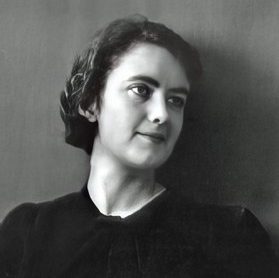 Jean Tetlock, 20. Photo: Wiki Commons
Jean Tetlock, 20. Photo: Wiki Commons
The presence of a suicide note: «I think I would have been a burden all my life — at least I could remove the burden of a paralyzed soul from a struggling world» — this was partly read — it seemed to make it clear that she wanted her end, and the investigation recorded sentence of suicide, motive unknown.
However, Nolan provocatively includes a scene—depicted as Oppenheimer's vision or fantasy—of a gloved hand belonging to an unknown person submerging Jean's head underwater. This could be seen simply as artistic liberties, were it not for the fact that it alludes to a well-known conspiracy theory suggesting that Jean's political views and association with the director of the Manhattan Project made her dangerous and therefore expendable for a greater good.
This theory was supported by the fact that her body contained chloral hydrate when she died; combined with the barbiturates, this meant that she had what could be called «Mickey Finn» in her system — a non-lethal dose of drugs that would immobilize her before she was forcibly drowned. As the American Prometheus wrote, one doctor said: «If you were smart and wanted to kill someone, this is the way to do it.»
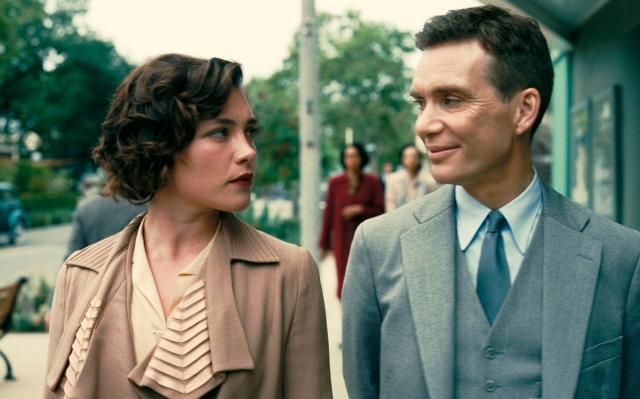 Florence Pugh as Jean Tatlock and Cillian Murphy as Oppenheimer. Photo: Melinda Sue Gordon/Universal Pictures via AP. Screenwriter Bruce Robinson, best known for writing and directing the seminal film Withnail & Me, became convinced that Tetlock had been murdered and that the public record of her autopsy was, in his words, «an inadequate invention.»
Florence Pugh as Jean Tatlock and Cillian Murphy as Oppenheimer. Photo: Melinda Sue Gordon/Universal Pictures via AP. Screenwriter Bruce Robinson, best known for writing and directing the seminal film Withnail & Me, became convinced that Tetlock had been murdered and that the public record of her autopsy was, in his words, «an inadequate invention.»
As Robinson told writer Alistair Owen in his collection of interviews Smoking in Bed: “Piece by piece we are coming to a point where, if I were a cop, I would make an arrest. The G2/FBI people killed her. They gave her chloral hydrate to knock her out, threw her in the bath, forged the note, and a day or two later—because her father was a very famous man in the Berkeley area—there were reports in the papers that Jean Tetlock had committed suicide.
Whatever the truth behind Tatlock's death, Nolan's film certainly hints at a bigger story than just a tragic self-inflicted demise and will no doubt leave others asking questions again.
Could the Trinity Test really end the world?
Tatlock's interest in John Donne's poetry inspired Oppenheimer to name the first atomic bomb test «Trinity» after Donne's religious verse. Yet it was fear of planetary annihilation, not poetic contemplation, that prompted Matt Damon's General Groves to ask Oppenheimer in the film what the chances of global annihilation were. “Near zero,” the physicist replies. In one of the film's brightest moments, Groves' horror at this revelation leads Oppenheimer to say, «What do you want from a theory alone?» The military replies: «It would be nice to have zero.»
 An Oppenheimer bomb is being loaded into a turret at the Trinity Test Site in New Mexico. Photo: AP
An Oppenheimer bomb is being loaded into a turret at the Trinity Test Site in New Mexico. Photo: AP
The «atmospheric combustion» scenario proposed in the film caused genuine fear among many scientists, including Oppenheimer's colleague Edward Teller, who feared that the splitting of the atom would lead to a chain reaction that would destroy the world. But by the time the Trinity test took place, it was generally accepted that such a seismic event was impossible.
Richard Rhodes, author of Building the Atomic Bomb, commented to The Washington Post: “This thing has been blown to incredible proportions over the years. The question that preoccupied the scientists before the test was not «Will it blow up the world?» but «Will it work at all?»
The conversation between Groves So Oppenheimer is a moment of dramatic liberties on Nolan's part that effectively dramatizes the fears that the military that financed the operation had, but the main concern was about the success of the test, not about whether that it will cause the apocalypse.
 Did the last exchange between Oppenheimer and Einstein take place?
Did the last exchange between Oppenheimer and Einstein take place?
A recurring motif throughout the film, which is only fully explained at its climax, is the meeting between Einstein and Oppenheimer when the latter becomes a high-profile figure at Princeton under the auspices of his future nemesis Lewis Strauss. The encounter between the two men—misinterpreted by Strauss, who smugly believed they were criticizing him—shows a mournful Einstein suggesting that Oppenheimer's invention of the atomic bomb could have destroyed the world, and Oppenheimer responding, «I believe we did.
This is, of course, a Nolan invention that elegantly portrays both the common values and differences between the two men. But they certainly knew each other in real life, having first met in 1932 at Caltech and then worked together at Princeton after the war, where Oppenheimer remained until 1966. and Sherwin suggest that the young man saw Einstein as «a living patron of physics, not a working scientist.»
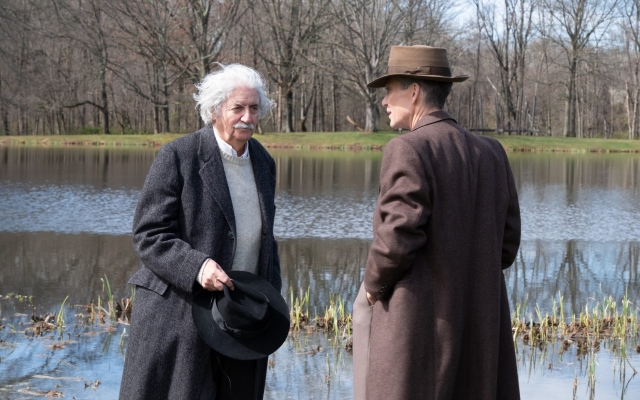 Tom Conti and Cillian Murphy in Oppenheimer. Photo: Melinda Sue Gordon/Universal
Tom Conti and Cillian Murphy in Oppenheimer. Photo: Melinda Sue Gordon/Universal
Nevertheless, Einstein respected Oppenheimer, calling him «an extraordinarily capable man with a versatile education», and later defended him when his security clearance was threatened, publicly stating that «I admire him not only as a scientist, but also as a great man.» and privately that «the problem with Oppenheimer is that he loves a woman who doesn't love him — the government of the United States.»
Oppenheimer responded to the compliment by saying in a lecture in 1965: “Einstein is also known, and rightly so, I think, as a man of very good will and humanity. Indeed, if I had to come up with one word for its relationship to human problems, I would choose the Sanskrit word ahinsa — do no harm, harmlessness. Although Einstein wrote a letter to President Roosevelt urging him to develop an atomic program, he never participated in the Manhattan Project and ultimately believed in the power of science to be creative, not destructive.
Did President Truman Oppenheimer call a «crybaby»?
In one of Oppenheimer's most dramatic scenes, President Truman, played by Nolan regular Gary Oldman, meets with the physicist, ostensibly to congratulate him on his work on the Manhattan Project. But when Oppenheimer repents of his involvement in the project and suggests that his hands are covered in blood, Truman sardonically waves his handkerchief at him, and then remarks about Oppenheimer's expulsion from the Oval Office: «Don't let that crybaby in here anymore.
It seems like it's almost on the nose, unlike much of the rest of the elegant script, but this is one case where the dramatic confrontation is based on documented facts. Monk's biographer testifies that Truman called Oppenheimer a «cry-baby scientist» to his aides and told his Secretary of State Dean Acheson that he never wanted to see him again.
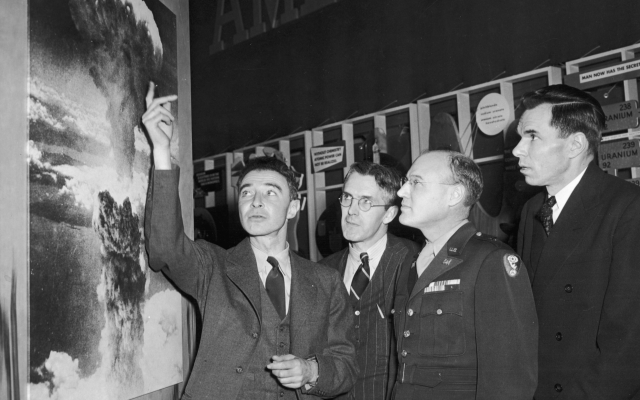 J. Robert Oppenheimer points to a photograph of the atomic bomb detonation over Nagasaki, Japan, in the 1940s. Photo: GettyAlthough this is compressed into one short scene when Oppenheimer overhears his dismissal, it is nonetheless true that Truman was outraged by the scientist's principled objection. “Blood on his hands, dammit, he has half as much blood on his hands as I do,” he said. «Just don't whine about it.»
J. Robert Oppenheimer points to a photograph of the atomic bomb detonation over Nagasaki, Japan, in the 1940s. Photo: GettyAlthough this is compressed into one short scene when Oppenheimer overhears his dismissal, it is nonetheless true that Truman was outraged by the scientist's principled objection. “Blood on his hands, dammit, he has half as much blood on his hands as I do,” he said. «Just don't whine about it.»
Didn't Kyoto get bombed because a politician spent his honeymoon there?
In a moment epitomizing the mixture of horror and black comedy that defined much of the Manhattan Project, U.S. Secretary of War Henry Stimson, in deciding where legitimate atomic bomb targets would be, offers to spare Kyoto, partly because of its cultural and historical significance to Japan. but also, as Stimson cheerfully says, because he and his wife honeymooned there.
This line, offered by James Remar, the actor who played Stimson, seems like the perfect encapsulation of institutional whim. «It's the bureaucratic quality of a group of people discussing massive destruction and how they're going to do these horrible things.» Nolan said. “And suddenly you see a human face in these negotiations.”
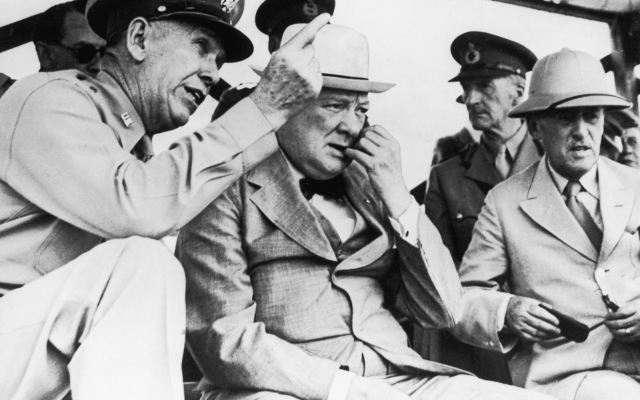 US Secretary of State Henry Stimson, right, with Winston Churchill and the Chief US headquarters by General George Marshall (right) in 1942. Photo: Getty
US Secretary of State Henry Stimson, right, with Winston Churchill and the Chief US headquarters by General George Marshall (right) in 1942. Photo: Getty
It is not clear if Stimson went on his honeymoon to Kyoto, let alone if his personal attachment to the city led to his almost arbitrary escape. However, it is documented that Stimson visited the city several times while he was governor of the Philippines in the 1920s, and that he personally lobbied Truman not to bomb it. The President agreed with him, as Stimson wrote in his diary on July 24, 1945. the act may make it impossible for the long post-war period to reconcile the Japanese with us in the area, and not with the Russians.”
Still others argue that, and not Stimson or any other politician, the credit for saving Kyoto should go to the archaeologist and art historian Langdon Warner—one of the inspirations for Indiana Jones—who, in his role in Monuments, Fine Arts, and the Armed Forces Archives, has come up with a compelling arguments against the bombing of Kyoto along with Nara and Kamakura. To this end, monuments to Warner have been erected in Kyoto and Kamakura; a gesture of gratitude to a man who truly understood the horror of what would happen if Japanese culture were swept away by Oppenheimer's invention.
Did Kitty testify on her husband's behalf at the security hearing?
Emily Blunt's presence in most of Oppenheimer's writing is a little confusing; for a film revolving mostly around men, the A-list star is mostly limited to domestic scenes at home that show both her alcoholism and frustration at being suspended from her husband's job. However, she does have a great scene near the end that will likely earn Blunt at least an Oscar nomination when Kitty attends the security hearing and passionately defends her husband and attacks their right to hold a quasi-kangaroo court, which will eventually lead to withdrawal. his access to classified data.
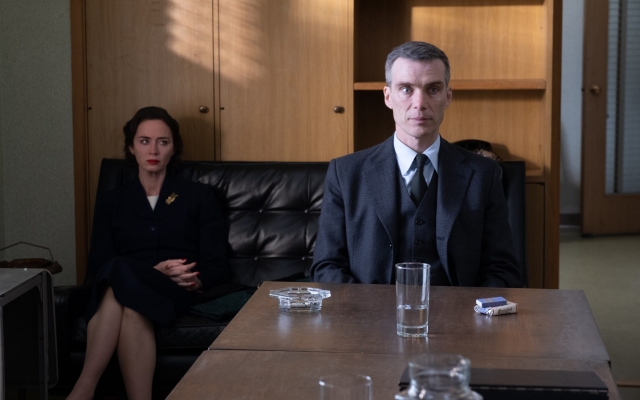 Emily Blunt and Cillian Murphy as Kitty and J. Robert Oppenheimer. Photo: Universal
Emily Blunt and Cillian Murphy as Kitty and J. Robert Oppenheimer. Photo: Universal
It is largely taken from the transcript of the hearings—as is much of this narrative thread—and shows Kitty as «straight and unflappable,» as Bird and Sherwin suggest, and that «she answered every question easily, coolly, and accurately.» Rejecting the notion that her and her husband's previous association with the Communist Party might pose a security risk, Oppenheimer's biographers conclude that «Kitty didn't give up an inch. Even [Roger] Robb [the lawyer who cross-examined the hearing] couldn't move her. Calm and at the same time alert to every nuance, she was undoubtedly a better witness than the husband she protected.
Did Oppenheimer really learn Dutch in six weeks?
There is a funny scene at the beginning of the film when Oppenheimer is about to give a lecture to a group of Dutch students. His colleague confidently expects him to speak in English, leading to everyone's confusion, but instead Oppenheimer delivers a complex technical speech in fluent Dutch. When asked how long it took him to master the language, Oppenheimer replied, «Six weeks.»
This may seem like pure fiction, designed to demonstrate Oppenheimer's genius at the level of a scientist, but it is absolutely true; the physicist had the opportunity to master languages, allowing him to learn Dutch and Sanskrit in record time; reading the Bhagavad Gita in the latter prompted him to come out with his famous comment after the success of the Trinity test: «Now I have become death, the destroyer of worlds.» His friend Harold Cherniss paid tribute to his ability to master any intellectual challenge, saying, «When he was interested in something, he very quickly acquired an enormous amount of knowledge about it.»
Did he go on a diet of martinis and cigarettes?
Cillian Murphy's brilliant performance as Oppenheimer is partly due to the naturally slender actor's weight loss, which makes him look as haggard as a real man. Oppenheimer himself weighed only 127 pounds (a little over nine stone) and failed an army medical examination because he was considered too thin to be an officer. At its most extreme moment, during the Manhattan Project, Oppenheimer's weight dropped to just 115 pounds.
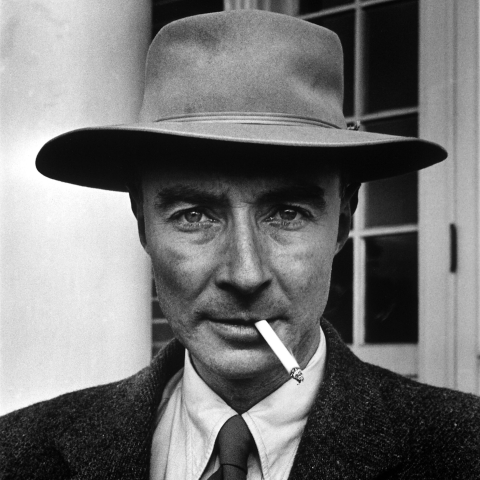 J. Robert Oppenheimer in 1947. Photo: Getty
J. Robert Oppenheimer in 1947. Photo: Getty
Byrd and Sherwin wrote that «his energy level never dropped, but it seemed to literally disappear little by little, day by day.» He may not have literally lived off cigarettes and martinis, as the movie suggests, but food increasingly became secondary to the more direct stimulation provided by nicotine and alcohol; as one of his neighbors remarked: «My God, if a person ate a thousand calories a day, it was a miracle.»
Kitty Oppenheimer refused to shake hands with Edward Teller?
There is a powerful short scene at the end of the film where an elderly and rehabilitated Oppenheimer is awarded the Femi Prize at the White House, and his friend turned Judas Edward Teller (who testified against him at security hearing) offers to shake his hand. Oppenheimer does this apparently without resentment or anger. But when Teller, in turn, extends his hand to Kitty, she frowns furiously, and he, embarrassed, pulls her back.
This might have seemed like a convenient dramatic fiction, but audiences testified to its accuracy and offered confirmation—as if it were necessary—that Kitty's passion and anger were an invaluable backdrop to her husband's composure and more analytical temperament.
p>













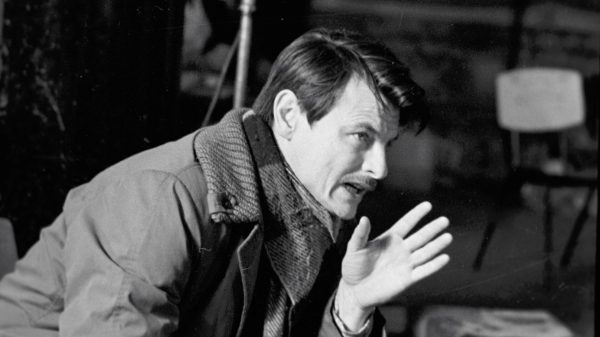








































Свежие комментарии